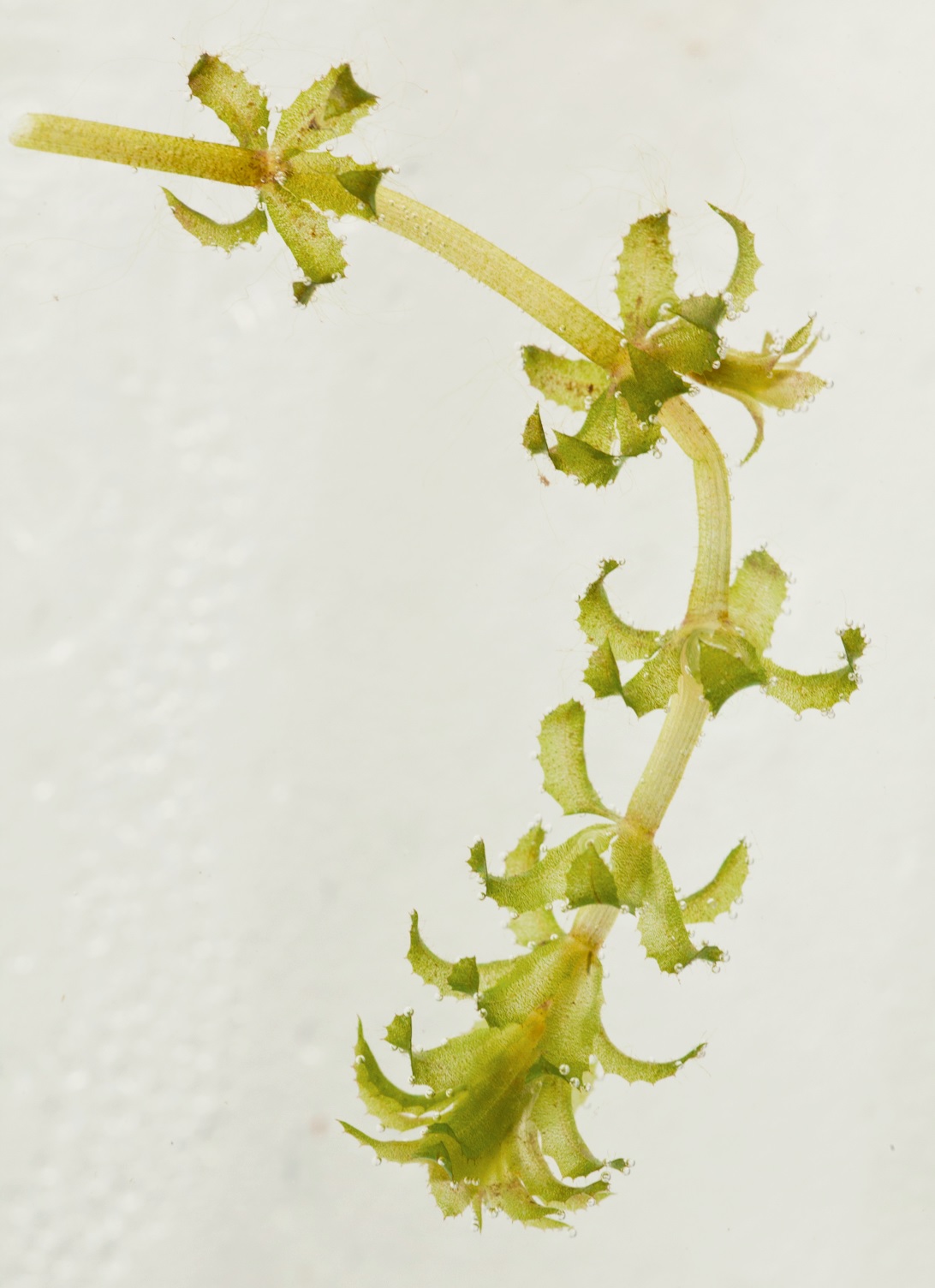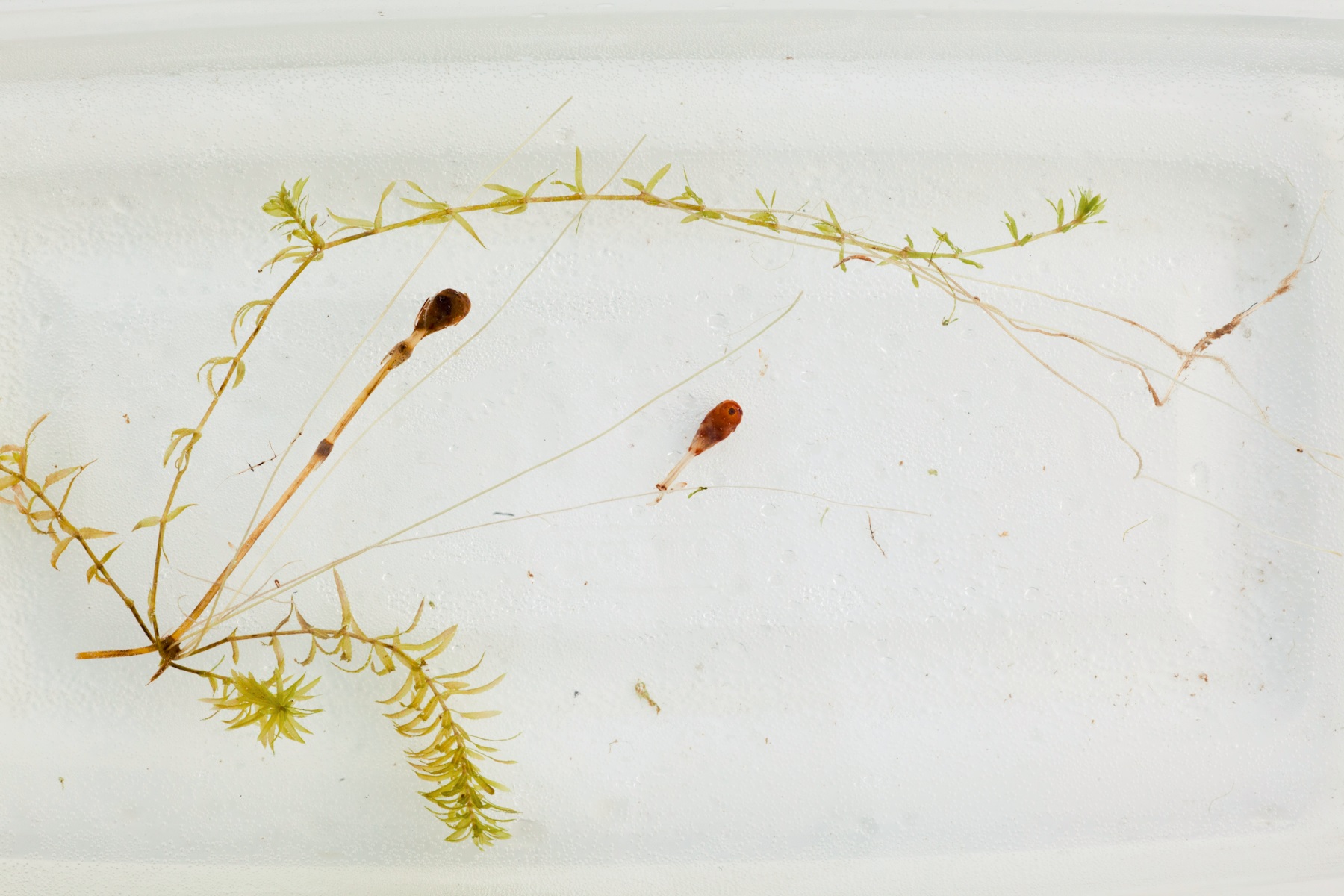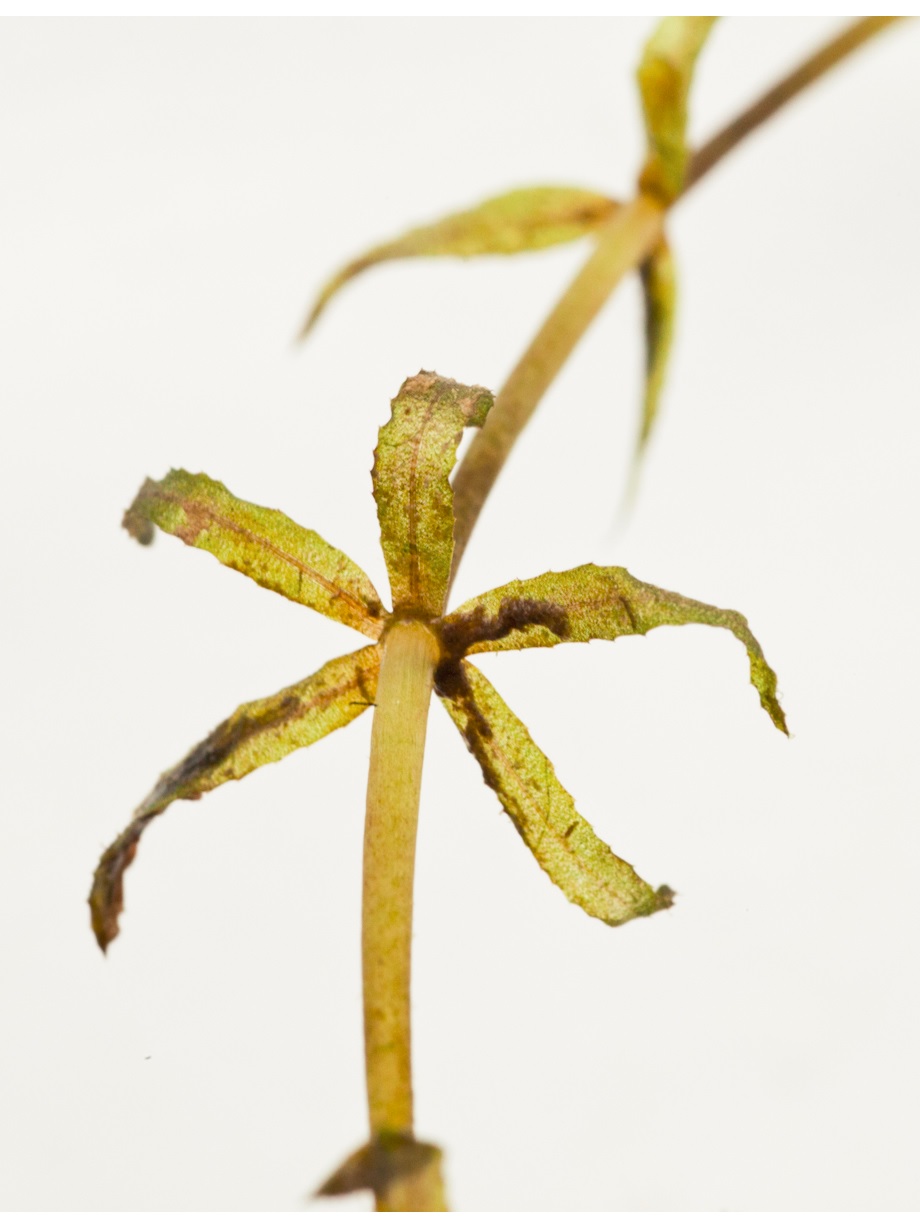 Hydrilla is often labeled the worst aquatic invasive plant because it is aggressive, impactful, and persistent. It can spread from a very small fragment. It seems the more we look for it, the more often it’s found. Hydrilla is widespread in the Croton River system and is also in some nearby lakes and in Connecticut – too close for comfort.
Hydrilla is often labeled the worst aquatic invasive plant because it is aggressive, impactful, and persistent. It can spread from a very small fragment. It seems the more we look for it, the more often it’s found. Hydrilla is widespread in the Croton River system and is also in some nearby lakes and in Connecticut – too close for comfort.
Description
Hydrilla (Hydrilla verticillata) is a submersed perennial. The plant roots in the bed of the waterbody and has long stems (up to 25 feet in length) that branch at the surface where growth becomes horizontal and forms dense mats. Small, pointed, often serrated leaves are arranged around the stem in whorls of 4 to 8.
 Spread
Spread
Hydrilla propagates primarily by stem fragments, although turions (buds) and subterranean tubers also play an important role in its spread and persistence. The major spread of hydrilla is from fragments on recreational boats and trailers. New colonies are often found near boat ramps as stem pieces become rooted, since even very small fragments can start new populations. Boat traffic through established populations can spread hydrilla throughout the waterbody, similar to the spread of Eurasian watermilfoil. Hydrilla is also often contaminates popular water garden plants and may be unwittingly transported and established in private ponds in this manner. It can then escape to other waterbodies in severe storms or floods.
 Identification
Identification
Hydrilla has pointed, bright green leaves about 5/8 inches long. The leaves grow in whorls of 3 – 10 along the stem, with whorls of 4 or 5 being most common. The margins of the leaves are serrated or toothed. The underside of the leaf can have a reddish central spine and one or more small spines that give it a rough feeling when rubbed between your fingers. Thin stalks from the stem end in a single, small, floating white flower at the water’s surface. A key identifying feature is the presence of small (up to half inch long), dull-white to yellowish, potato-like tubers which grow 2 to 12 inches below the surface of the sediment at the ends of underground stems. These tubers form at the end of the growing season and serve to store food to allow hydrilla to overwinter. These tubers are one of the reasons that hydrilla is so persistent in waterbodies.
Hydrilla is very close in appearance to common waterweed, or common elodea (Elodea canadensis). Common elodea has only three leaves on a whorl, does not have visible teeth on the leaf margins, and does not have tubers.
If in doubt, have it checked out.
